Spin Rate Part II: Spin Axis & Useful Spin
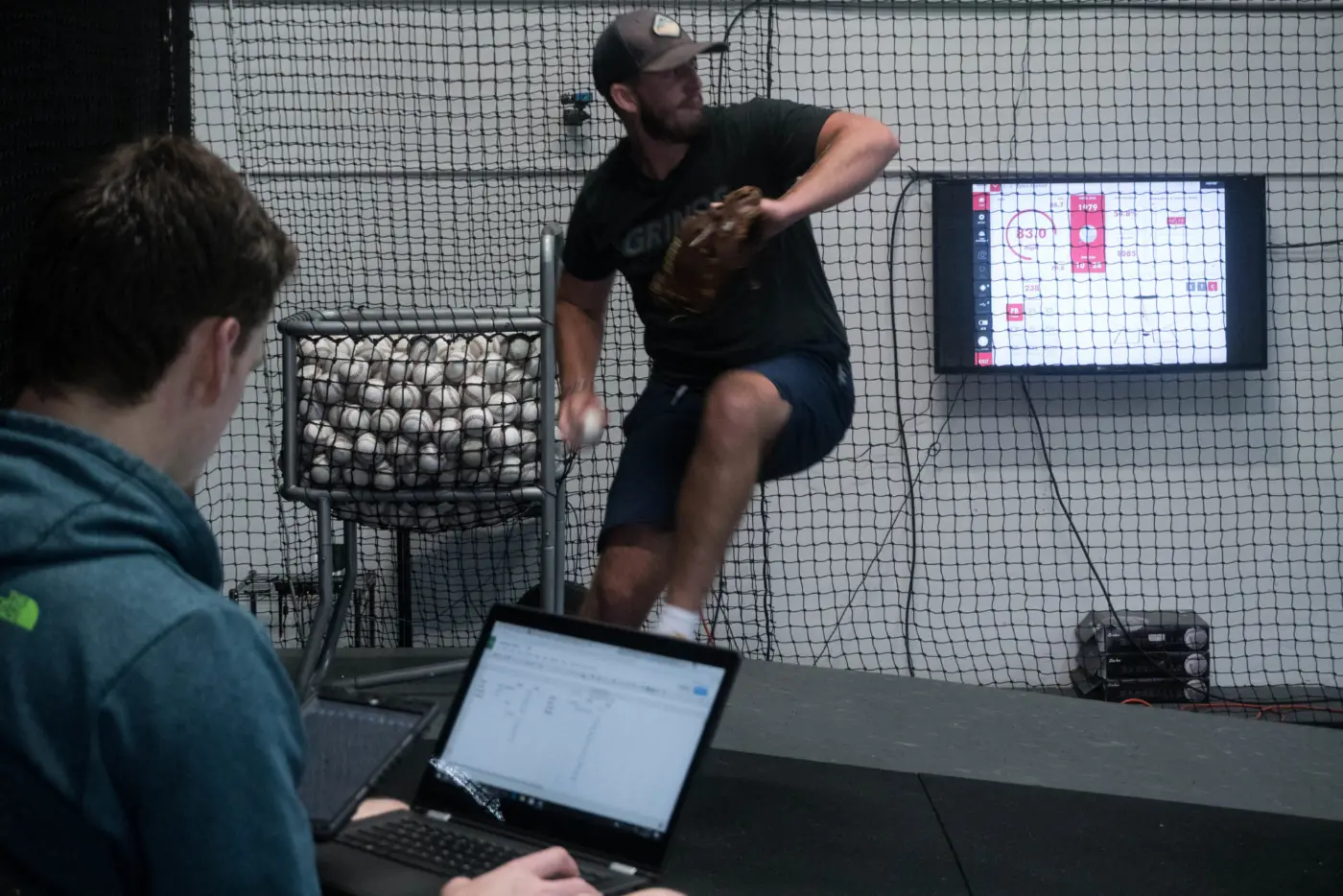
Building on Part One of this series we’ll be looking at how spin rate actually causes pitches to move, and what we can do to affect this.
Review of Spin Rate: What we Know Now
In our previous article we talked about the Magnus effect which, as a result of the backspin a thrown ball has, generates lift. With a higher spin rate this force is larger, leading to the hitter’s perception of the “rising fastball.” Conversely, a low spin rate fastball has a smaller Magnus effect, and is thus a sinking fastball.
The white arrow is air being pushed down behind the ball, the yellow arrow is the Magnus force pushing up
We know that higher spin rate fastballs lead to more swinging strikes. We know that we can affect a pitcher’s spin rate by throwing a splitter or a knuckleball. We know that spin rate and velocity are generally linearly related, and that a pitcher’s Spin to Velocity Ratio (spin rate (RPM) / pitch velocity (MPH)) is constant for any pitch velocity.
There’s a lot we do not know, but the rest of this post will attempt to fill in more of the gaps.
Spin Axis
When describing spin axis in part one, we made the assumption that four seam fastballs are thrown with a perfect backspin, but this is never actually true.
Pitchers rarely (if ever) throw over the top with true backspin. The majority of pitches are thrown at an angle closer to 30-45 degrees which may result in natural cut or run. This picture below does a great job a representing that.
From: How baseball spin influences the performance of a pitcher: Nagami et al. (Open Access)
The left side of the picture shows the release angle of this group of pitchers is closer to 30-45 degrees. The picture on the right (from an overhead view) shows how the ball is redirected to the plate. Remember each pitcher’s arm moves closer to the shape of an oval and the release it a tangent to the target. The ball also will not often be lined up directly with home plate, because of positioning on the rubber, but often at an angle.
Recall that the Magnus effect is perpendicular to the spin axis of the ball. As the figure above shows, fastballs rarely spin perfectly end over end, meaning that the Magnus effect is rarely pointing perfectly upwards. Due to the fact that the ball is on a slight tilt, the Magnus effect acts on the ball at an angle, adding a slight horizontal force. The spin axis orientation at an angle is going to cause more side spin and less backspin, causing the ball to tail and possibly cause sink.
Professor Alan Nathan expand on some of these idea’s on an interview with him on the physics of pitching.
The image below shows the Magnus effect for a left-handed 4-seam and 2-seam fastball (or a right-handed cutter). The 4-seam fastball, as expected, has a perfectly vertical spin axis. The 2-seam fastball’s axis, however, points towards 11 o’clock, meaning that the Magnus force points in this direction, giving the ball a horizontal component of force that is pointed towards 1st base. This means the pitch has arm-side run for a lefty. For a right-handed 2-seamer (or left-handed cutter), the force is towards third base.
Imagine courtesy of sonsofsamhorn.com
This ideal was expanded on further in the paper Factors Determining the Spin Axis of a Pitched Fastball in Baseball T Jinji (Open Access).
Essentially the spin axis of each pitch is going to be significantly correlated with the orientation of the hands and fingers just before and at ball release.
This also make intuitive sense when also thinking about pitcher’s arm angles.
Changing spin axis is possible, but it might be more difficult than you think. Body control, and even more specifically finger control, is extremely difficult at the high speeds that pitches are thrown. Nevertheless, it is a key component of understanding how pitches move, and how they can be improved.
Also worth noting is the importance of a stable spin axis. A stable spin axis means that the seams of the ball rotate uniformly as the ball travels through the air. A stable spin axis results in not only more break, but more consistent break which can be easier to control.
Spin Axis of Various Pitches
The gifs below show various pitches being thrown by a pitching machine (on the left) and a pitcher (on the right).
Fastball:
As explained above, a fastball has pure backspin which results in a vertical Magnus force which negates some of the effect of gravity. In reality, however, most fastballs are thrown with some amount of tilt.
Although the pitching machine pitches the ball on an unstable spin axis (notice how the ball appears to wobble), the backspin can be clearly seen in both gifs.
Slider:
Ideally, a slider has a much more horizontal spin axis than a cutter/ 2-seam, which results in the Magnus force pointing more horizontal than vertical. This results in an increase in lateral break as well as vertical break due to the decrease in lift.
As can be seen above, the pitching machine slider has a noticeably different spin axis than the pitcher’s slider. In reality, throwing a true slider is nearly impossible, and almost all sliders have some form of gyrospin attached to them. This is what hitters see when they talk about the “dot” on a slider. More on this later.
edit 11/3/2018: the ‘dot’ on a slider is also relative to a pitcher’s grip
Curveball:
A perfect 12-6 curveball spins end-over-end, or exactly the opposite as a true 4-seam fastball. This results in a Magnus force in the opposite direction as a fastball: downward. This gives curveballs their signature downward movement.
As with the slider, a perfect curveball is virtually impossible, and most non-pitching machine curveballs have some sort of tilt (not perfectly 12-6) as well as some gyroscopic spin. That being said, curveballs generally have proportionally much lower gyroscopic spin sliders, as can be seen above.
Splitter:
Splitters are thrown on basically the same axis as a 4 or 2-seam fastball, just with a greatly reduced spin. As a result, the Magnus effect is much smaller, meaning the gravitational force has a stronger net pull downward on the ball.
Naturally, It is much easier for athletes to throw a fastball than it is a curveball or slider, thus the pitching machine and the human splitter are rather similar. The main observation here is that the splitter spins noticeably slower than the fastball. The only noticeable difference between these two pitches is that the spin axis are slightly different.
4-Seam vs. 2-Seam
Beyond arm angle or release point, seam orientation has some effect on movement as well.
In order to more clearly illustrate the effect of seam orientations, let us first consider a dimpled golf ball. Smooth air flows around the ball and leaves a turbulent wake behind the ball, otherwise known as drag, which slows down the ball. A dimpled ball leaves a smaller wake due to the fact that the flowing air can “stick” to the ball for a longer period of time due to the creation of a turbulent boundary layer. This means less drag on the ball, and thus the ball travels further. The effect can be seen in the image below.
Airflow around a smooth and dimpled golf ball, source
Now let us consider again the Magnus effect on the golf ball, and recall how the spinning ball redirects air downward. Knowing that the dimpled golf ball redirects more air than the smooth ball, it can be shown that the dimpled ball will have a greater Magnus effect, and thus greater lift, than the smooth ball. A dimpled ball means turbulent flow, which means a stronger Magnus effect.
This brings us back to baseball and try to make the connection from dimples to seams.
The difference between a 4-seam fastball and a 2-seam fastball is pretty easy to understand. The 4-seam fastball is thrown with an orientation that results in all four seams rotate uniformly into the oncoming air. A 2-seam fastball rotates such that only two of the seams encounter the airflow. This can be seen below.
Left: Four Seam Spin Axis / Right: Two Seam Spin Axis
Similar to the effect that the dimples has on a golf ball, the seams on a baseball create turbulence. With the 4-seam fastball, the seams can effectively grab the air and generate a greater Magnus force. The 2-seam fastball, however, has a large smooth section. This leads to a weaker boundary layer for that section of the ball, and thus a weaker Magnus force.
For a “rising” fastball, this means that the 4-seam grip has more rise (or less drop) than the 2-seam grip. For a 2-seamer or cutter, the effect is a bit more complex. A two-seam gripped “sinker” would have more depth due to the weaker Magnus force, but less lateral movement than the same pitch thrown with a 4-seam grip.
Ultimately it is up to the pitcher to decide which grip optimally fits into their arsenal.
Useful Spin
Remember how we mentioned gyrospin above? As it turns out, all spin is not alike and not all spin helps movement. That is to say that it is really impossible to tell how good a pitch is just by the spin rate that TrackMan spits out.
But don’t go throwing out your $30,000 black box just yet.
As described by Dr. Alan Nathan in his article Determining the 3D Spin Axis from TrackMan Data (it’s a very dense read), a baseball has two primary components of spin: transverse spin and parallel spin, or gyrospin.
Dr. Nathan notes that the Magnus force is only sensitive to the transverse spin, which travels perpendicular to the direction of the velocity of the ball (think perfect 4-seam axis). On the other hand, the gyrospin component, spinning like a football or bullet from a rifle, does not contribute to the Magnus force at all. An example of a gyroball is shown below.
To illustrate what this means in a practical sense, let’s look at 2 imaginary pitchers: Pitcher A and Pitcher B. The spin rate and true spin rate (transverse spin rate) are shown in a table below.
Knowing that transverse spin is the only component of spin that affects the Magnus force, we can assume that Pitcher A gets more break on his curveball, despite Pitcher B having a higher spin rate.
So how do we find the transverse spin, if TrackMan only gives us the raw spin rate?
In his paper mentioned above, Dr. Nathan provides some very complicated and complex calculations to calculate the transverse spin based on the velocity data given by TrackMan, but these calculations include a +/- 500 rpm RMS error. This means that these calculated spin rate values have far too much variation to have any real practical value.
Enter Rapsodo.
If you read our previous TrackMan vs Rapsodo validation article, you’ll have some idea of how Rapsodo works, and it’s potential uses going forward. In short, it is portable, smaller, and cheaper than the TrackMan, and has the ability to define the transverse spin axis, what it calls “True Spin.”.
Rapsodo uses optical tracking technology, while TrackMan uses radar, and can see the different axes of spin that a baseball may have. Rapsodo finds these three spin axes relative to the ball and converts them to create true spin, saving us from having to reinvent physics, and providing pitchers with a better tool to more effectively judge their pitches.
The true spin is going to relate highly to how much a pitch actually moves, whereas gyrospin does not affect movement.
Perhaps a pitcher’s slider has a high total spin rate, but spins purely gyroscopically like a washing machine. The spin rate values provided by tools like TrackMan are just not detailed enough to quantify the true value of a pitch. It may work as a general guide but won’t be an accurate measure for movement efficiency. Having a stable spin axis and high useful/true spin are the most vital pieces to a pitcher’s effectiveness.
Conclusion
There is a good amount we have learned about spin rate. We know what effects the spin axes of a ball are, and how, in theory, the pitch should break. We know the difference between a 4-seam thrown pitch and a 2-seam pitch. We know that pitch break is only due to transverse spin, or true spin which is perpendicular the the pitch axis. And with this information we can better inform our pitchers and more effectively help them improve their pitches.
But there is a lot we don’t know. We don’t know how to increase a pitcher’s spin rate. We don’t know what factors change spin rate (besides splitters), be it grip, limb length, hand size, mechanics, etc. We don’t objectively know how to change a pitcher’s spin axis. We have just become able to find the transverse spin axis, but we still don’t know how much a pitch will break given this.
We are, however, not afraid to admit that we don’t know everything. There’s no magic secret to spin rate, and there’s no magic secret to pitching. All we can do is give our athletes the access to the best resources and tools to throw harder and pitch better, while providing them with the best support and information we can offer.
Click here for Part 3 of the Spin Rate series, where we investigate the laminar express.
This article was co-written by Assistant Researcher Michael O’Connell, Engineering Intern Joe Marsh and edited by Kyle Boddy
Check out what else we know about everything spin rate / pitch design here.
Comment section
Add a Comment
You must be logged in to post a comment.
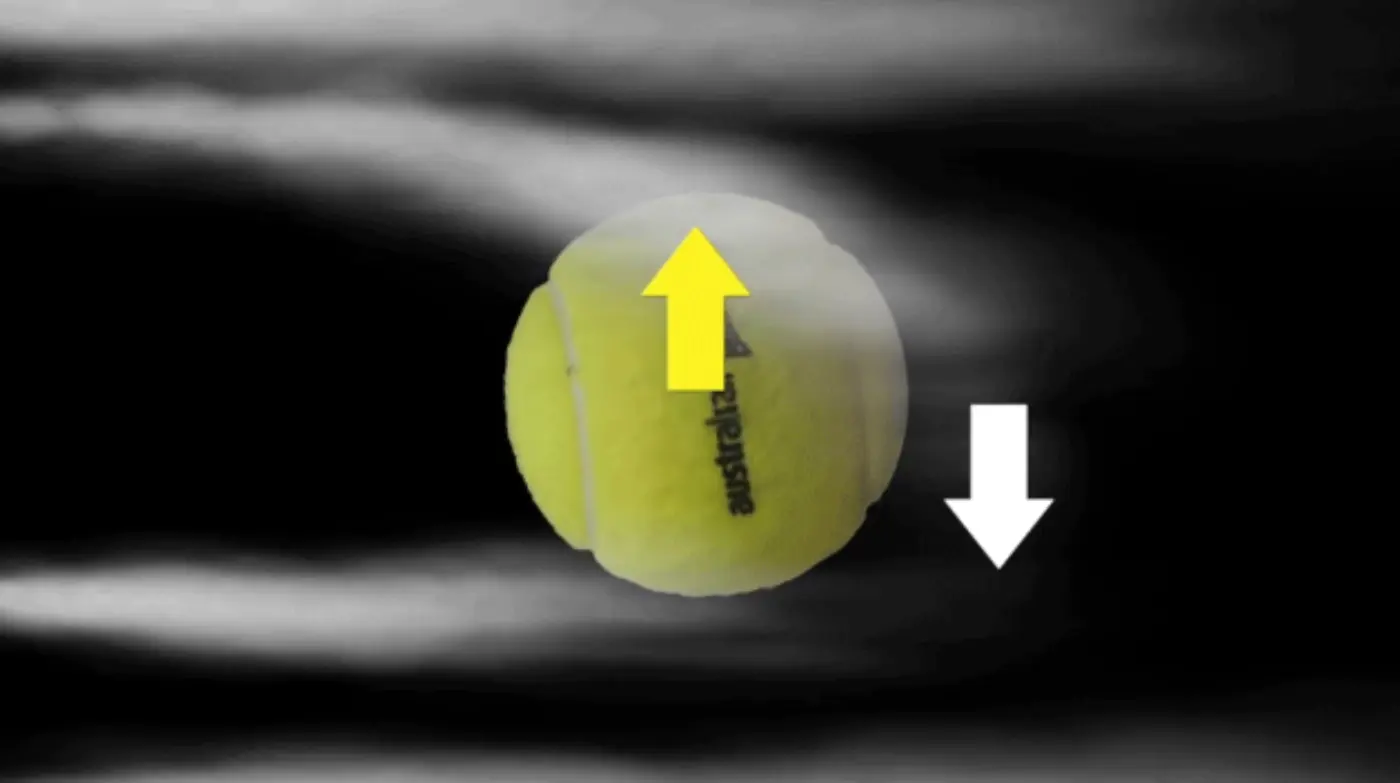
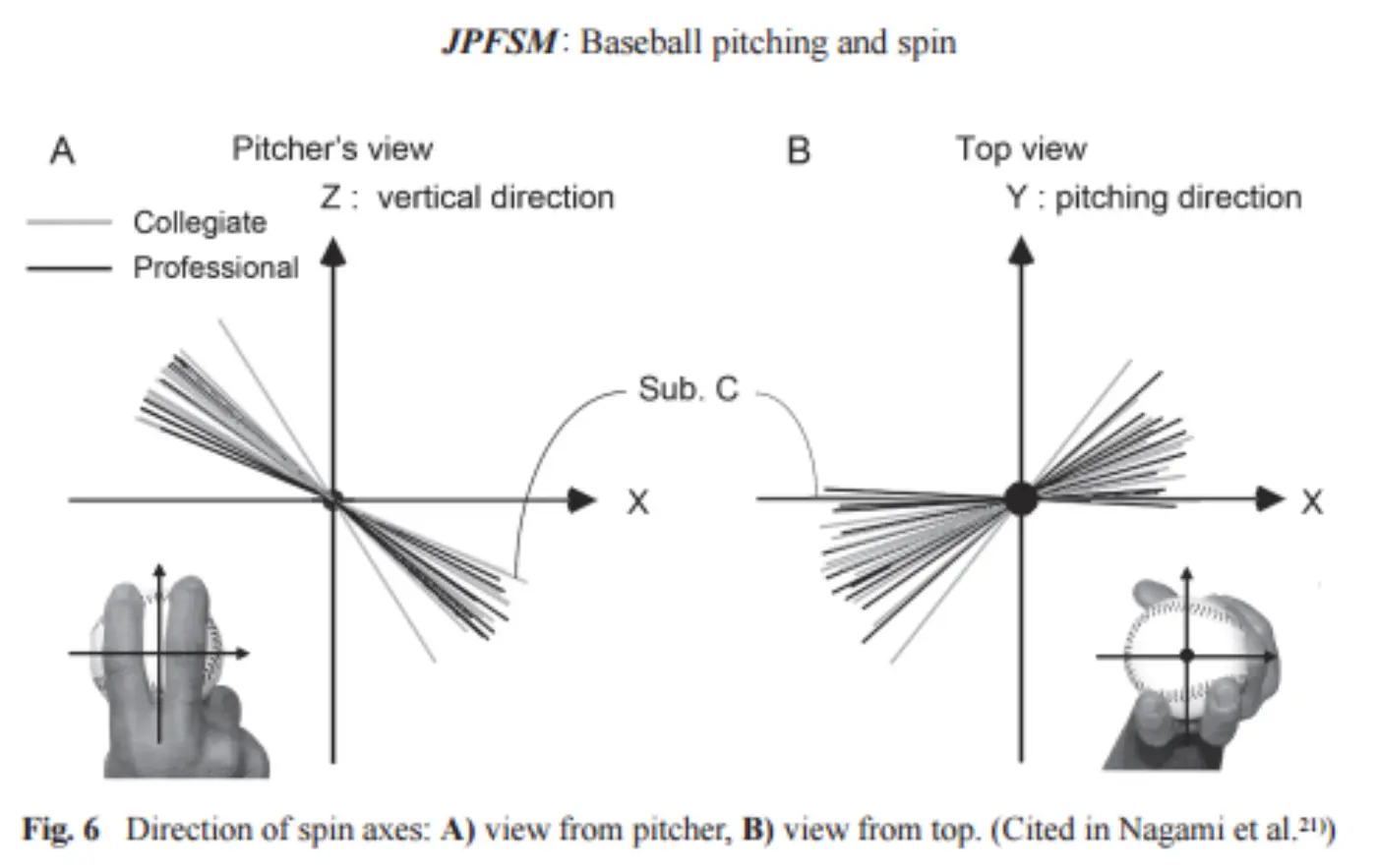
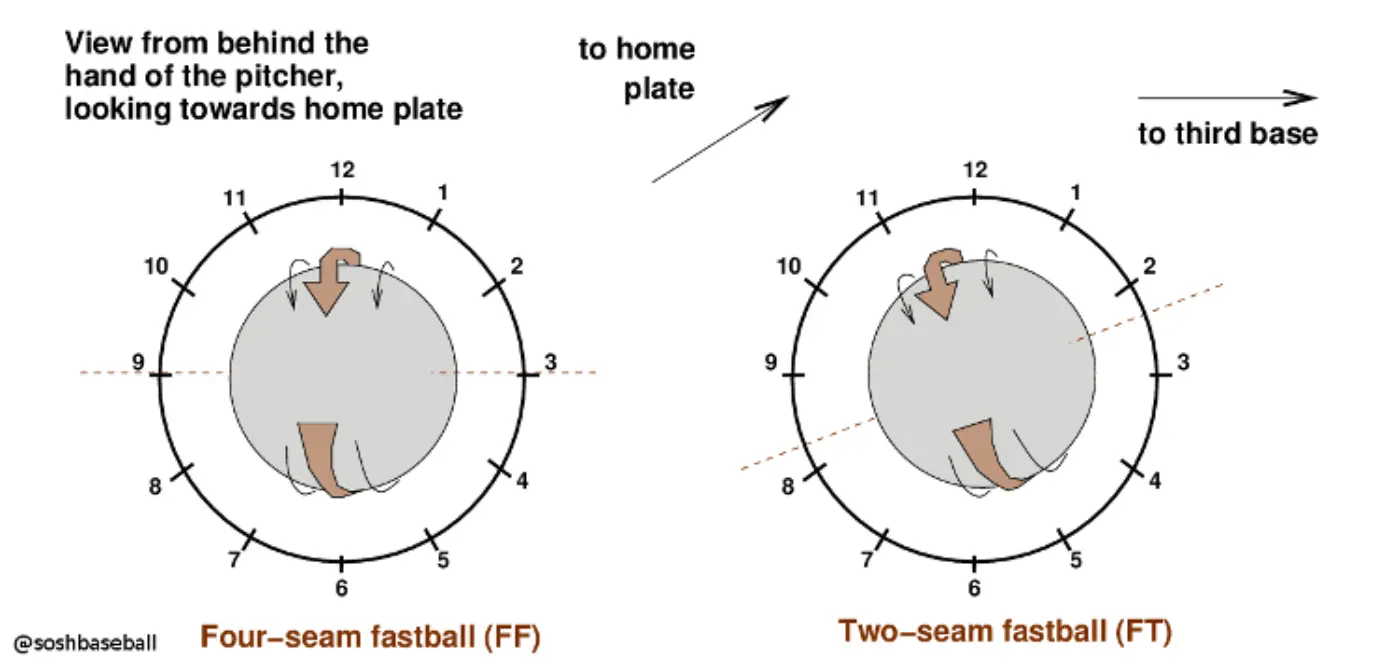
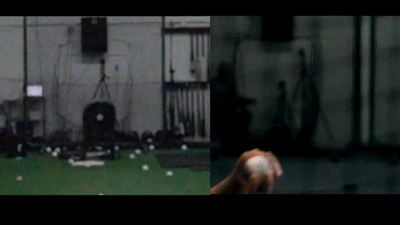
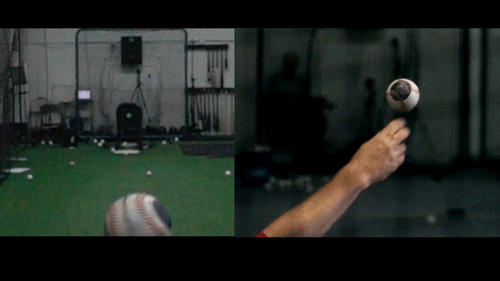
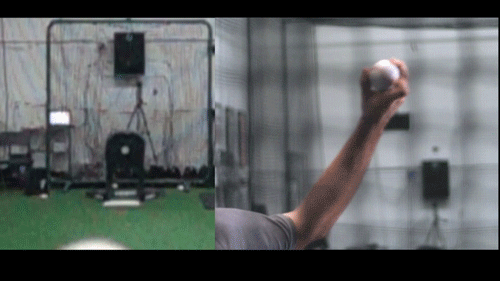
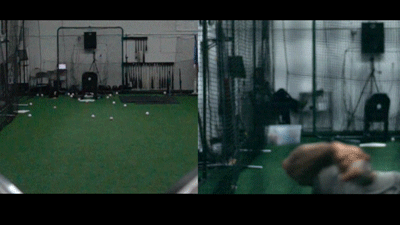
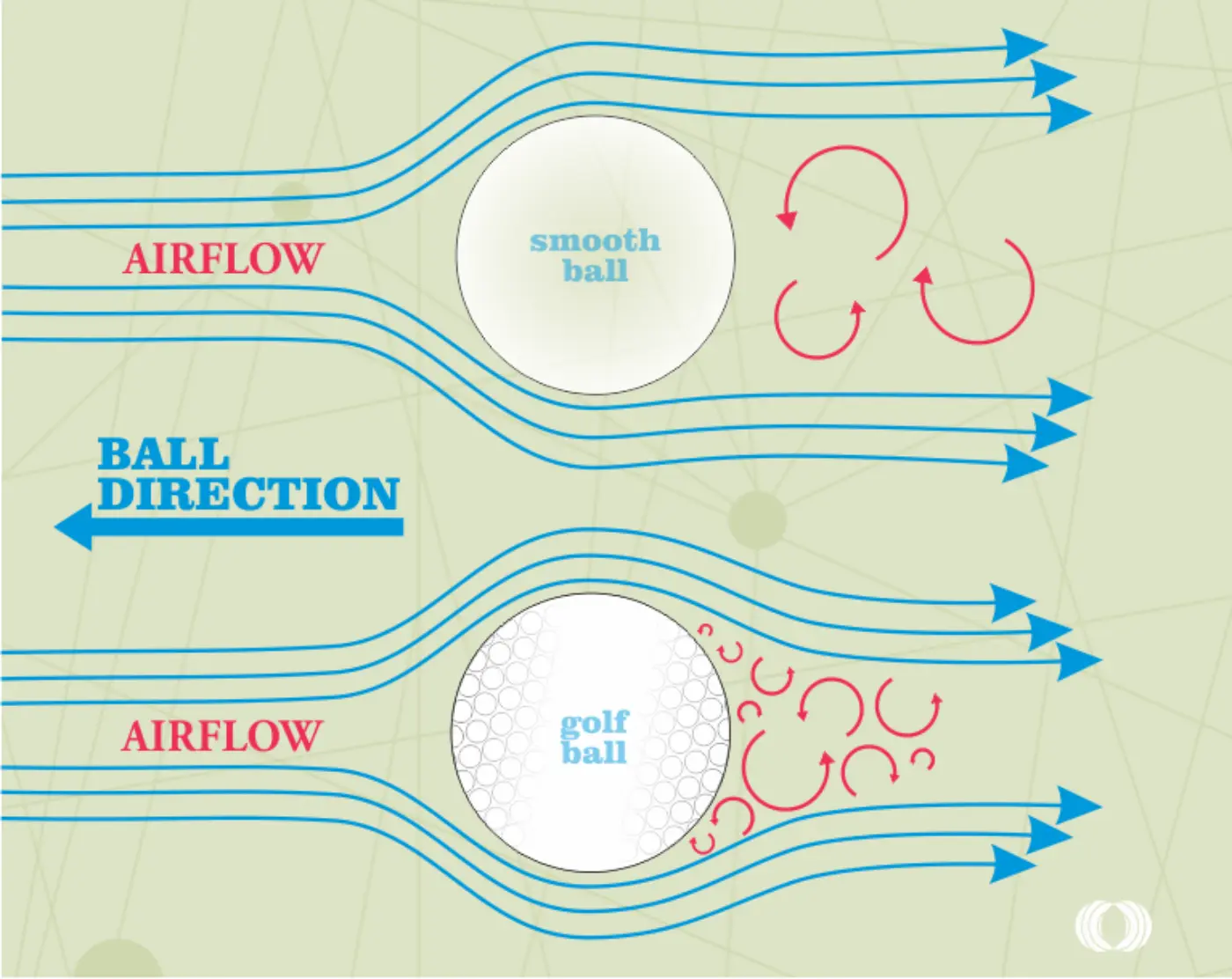
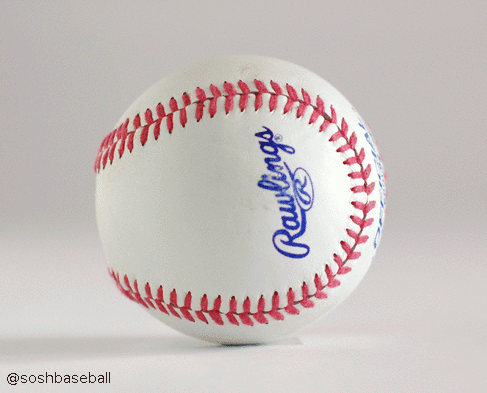
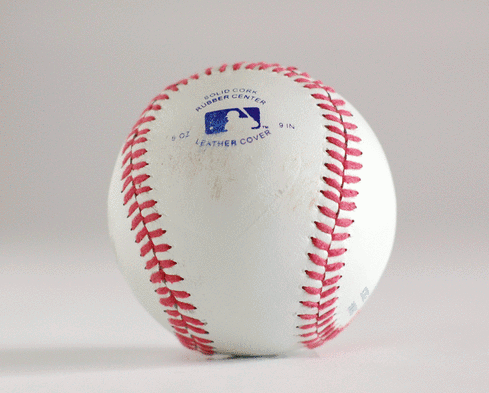
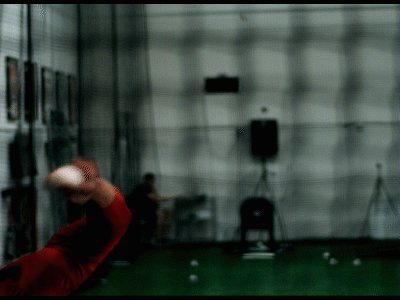
This Week In Baseball Writing: November 29, 2016 - SoSH -
[…] Spin Rate Part II: Spin Axis & Useful Spin […]
Arnaud -
Thanks for sharing this work with us.
I have a question for you.
I don’t if in the US you saw the samething but in France ball from left-handed pitcher move more than right handed. For a ball thow by a RHP has a straight trajectory wheras a ball thorw by a LHP has a little bit of down or latelal movement as two-seam Fb even if they throw a for seam.
Do you know why?
Driveline Baseball -
Can’t say exactly why but there’s been some evidence of possible genetic differences between left- and right- handed pitchers.
https://www.ncbi.nlm.nih.gov/pubmed/27256719
It very well could be related to that, otherwise we aren’t really sure!
What Else You’ll Need Besides Spin Rate | FanGraphs Baseball -
[…] bit of context comes from the concept of useful spin. We report total spin, but that’s just the spin imparted on the ball. Total spin. But spin […]
Ricky Garon -
If the slider spin creates a “dot” when looking from the batter’s view, then it must be “gyro rotation” which has no Magnus effect. I’m confused!
Ivan -
Not perfectly gyro though. A batters eyes are positioned above the path of a (well positioned) slider. The batter is looking down slightly toward the oncoming pitch. So the slider is spinning slightly “tilted” from a gyroscopic spin position and the “dot” which the batter sees is slightly higher up the front of the ball than it would be if spinning gyroscopically.
Harvey -
I want to make sure I understand the slider. An ideal slider would have perfectly horizontal spin diron cation and a completely vertical spin axis, correct?
What We (and the M’s) Mean When We Talk About Spin Rates | U.S.S. Mariner -
[…] and what they call “useful” spin – another way to frame spin efficiency – see this article at Driveline Baseball from Michael O’Connell. It goes into great detail about the differences between pitch types […]
Darryl Barnes -
So, to simplify this down, if a hitting sees a “dot” on a slider it is less effective (less break) than a more “slurvy” slider. In other words, you don’t really want sliders with a “dot”. “Dot” means too much gyroscopic spin.
MICHAEL O'CONNELL -
Not exactly, there are a couple things here.
Seeing a ‘dot’ or not will also depend on the grip so it’s hard to use that as a reliable measure.
If you were designing a pitch in a vacuum then having a gyroscopic slider (lower spin efficiency) would be good. The less/no break comes from the way pitch movement is measured, a hitter will still see the ball move.
Whether a gyroscopic slider is good or not depends on the other pitches you throw and how they fit together. So some athletes may do better with a more slurvy slider and others will do better with a more gyroscopic slider.
Zak W -
Perfectly gyroscopic spin would not produce a “dot.” It would look more like a circle. This is what hitters refer to as the “cement mixer” slider. It does not break, and typically gets hit a long way.
A tighter dot would be an illusion produced by the four seams of the baseball overlapping as they interrupt the area of this circle. Not exactly, but for thought exercise purposes: the tighter the dot, the more transverse spin on the slider.
Take a look at the slider and gyro gifs above, and imagine that everywhere a seam interrupts the surface of the ball gets colored dark. Focusing on the remaining white area will allow you to see the difference between the “dot” slider with useful movement and the “cement mixer” gyro that sits on a tee.
Jose -
On a four seam Fastball do the seams of horse shoe go towards the pitchers ring finger? Does this affect the movement of the ball?
Driveline Baseball -
Jose- Yes, you are right. Typically, pitchers will have the seams towards the ring finger. Switching it around usually does not do much. If anything, it might alter the spin profile (efficiency or rate) but not in a good way.